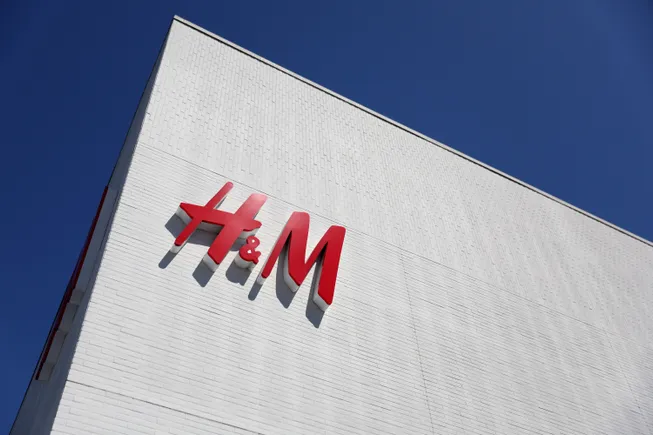Listen to the article 6 minutes This audio is automatically generated, please let us know if you have any feedback.
The H&M-backed co-lending program is now inviting more brands to join after initial success with India-based suppliers.
Last year, retail giant H&M partnered with Singapore’s DBS bank to launch the Future Supplier Initiative to help suppliers access “green” loans for infrastructure investment. For major fashion brands working to decarbonize their supply chains, helping suppliers overcome financing hurdles is crucial to achieving sustainability goals.
The program is supported by participating brands such as Gap Inc. and Mango Inc., as well as organizations such as the Apparel Impact Institute and The Fashion Pact, according to the program’s website. The Future Supplier Initiative also has supplier clusters in Bangladesh and Vietnam, but is considering expanding to other regions, including China and Italy, according to a June 13 announcement.
The fashion industry is working to reduce its carbon footprint, but implementing more sustainable practices in factories, such as electrification and renewable energy, can be financially challenging for suppliers.
This is where pooled funding becomes important.
Why pooled funding?
A growing number of governments are enacting laws requiring fashion companies to report their emissions and set carbon reduction targets.
H&M aims to reduce its Scope 3 emissions and drive more sustainable supply chain operations. Specifically, it aims to reduce its Scope 3 emissions by 56% and have 100% of its materials recycled or sustainably sourced by 2030. According to its latest annual sustainability report, the company reduced its Scope 3 emissions by 22% in 2023 compared to a 2019 baseline.
However, H&M needs support from its suppliers to meet its emissions reporting and reduction targets.
Tackling greenhouse gas emissions through a collaborative financial approach is “strategic for H&M,” Shen Lu, professor and dean of graduate studies at the University of Delaware’s School of Fashion & Apparel, told Fashion Dive sister publication Supply Chain Dive in an email. Partnering with a bank like DBS makes it easier to assess and manage lending risks, helping H&M ensure funds are used efficiently, he added.
“Many of H&M’s suppliers are small and medium-sized enterprises in developing countries who may lack the resources to address climate change and achieve their carbon emission reduction targets on their own,” Lu said. “So by working with banks we can provide these suppliers with the financial expertise and resources they need.”
Additionally, a collaborative approach can increase supplier interest in the program when there are multiple sponsors, according to the Future Supplier Initiative website. This collaborative model also helps speed decarbonization solutions, providing a scalable platform that benefits multiple suppliers in key manufacturing countries.
Other fashion companies are also setting up their own supplier support programs to help reduce carbon emissions, Lu said.
“These suppliers may lack the resources to address climate change and meet carbon emissions reduction targets on their own.”
Shen Lu
Professor and Dean of Graduate Studies, School of Fashion and Apparel, University of Delaware
For example, Levi’s has partnered with the International Finance Corporation, a part of the World Bank Group, to “provide advisory services to suppliers who want to invest in and benefit from additional technical support and upfront capital to reduce their energy, greenhouse gas, and water footprints,” according to the company’s sustainability report.
PVH Corp., which owns brands including Calvin Klein and Tommy Hilfiger, launched a similar sustainable supply chain financing program to help suppliers secure better financing rates based on their sustainability performance, according to a 2023 press release.
Who will be approved?
Suppliers that meet H&M’s human rights and environmental standards and policies, and are otherwise deemed “good,” can apply for green loans, an H&M spokesperson told Fashion Dive sister publication Supply Chain Dive in an email.
In general, the Future Supplier Initiative will prioritise higher-risk technologies or those with longer payback periods, as well as projects that combine energy efficiency measurements with renewable energy transition projects, the spokesman said.
“When customising the right financial support to enable investment, we take into account the supplier’s financial position, their level of technological innovation, our business share in the unit and the supplier’s own wishes,” the spokesperson explained. “Applications are considered based on the impact, the cost per tonne of CO2e reduced and our ability to claim reductions in accordance with the GHGP and SBTi according to current accounting rules.”
There are two main ways to apply: The first is a “push application,” in which H&M’s local teams work closely with key supplier factories to develop a roadmap for decarbonization by 2030, the spokesperson explained.
The second option is a “pull application”, whereby suppliers build their own application and explain what they want to achieve through their desired investment.
“Overall, fashion companies are increasingly viewing tackling climate change and carbon emissions as an opportunity rather than an economic burden.”
Shen Lu
Professor and Dean of Graduate Studies, School of Fashion and Apparel, University of Delaware
A spokesperson said the Future Supplier initiative is just one part of H&M’s “ecosystem” of financial tools, all of which fall under the umbrella of the company’s green investment team.
For example, when it comes to the electrification process, they explained that suppliers will need to make investments at the facility level, something that can be supported by the Supplier of the Future initiative, but this also creates the need for appropriate infrastructure investments, which require other tools.
“Overall, fashion companies are beginning to see tackling climate change and carbon emissions as an opportunity rather than an economic burden,” Lu explained, “so we’re likely to see more partnership programs being launched in the future.”


